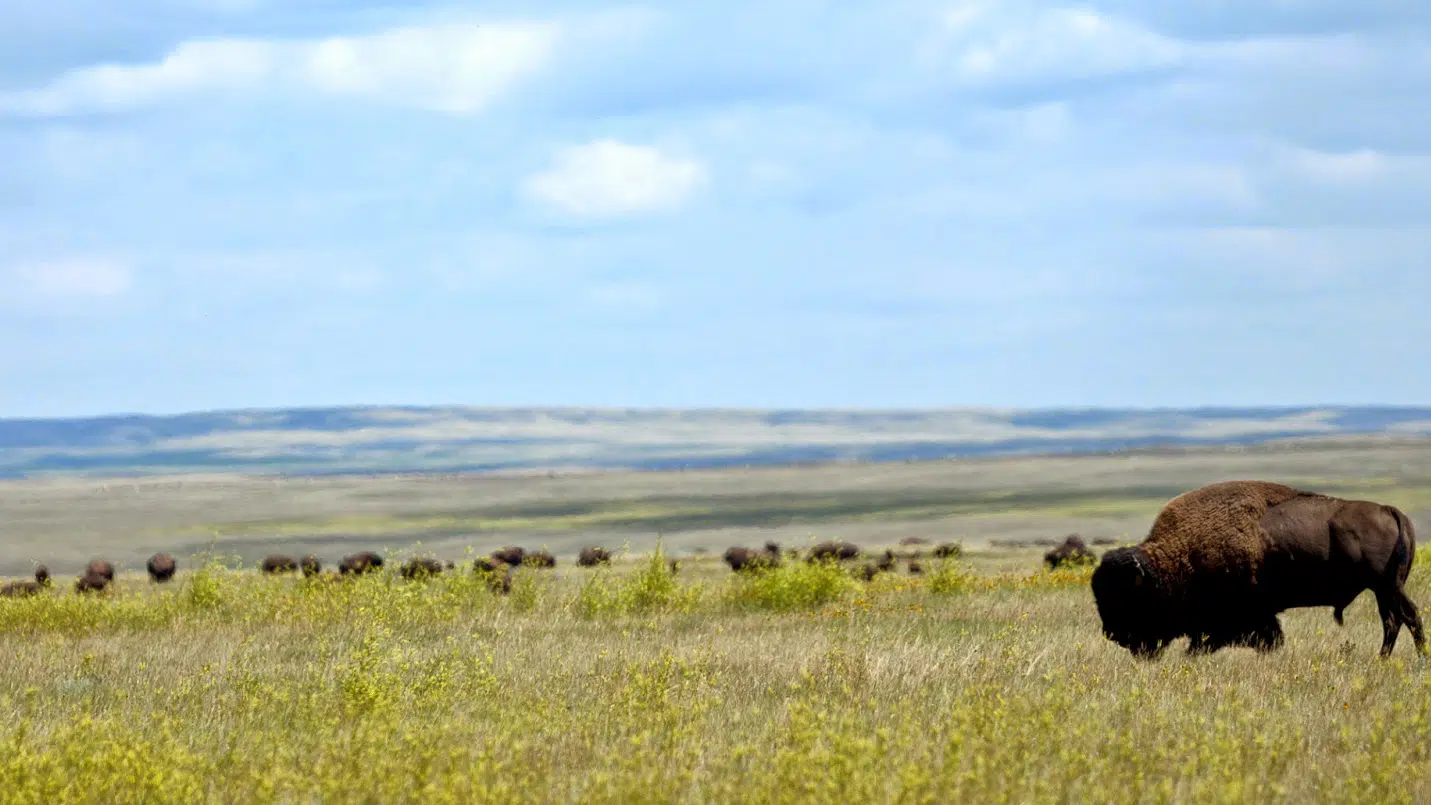
Wildfire in national park could help dwindling bison herd
While the wildfire burning in the Prince Albert National Park is putting cabin-owners on edge, it could be beneficial to a unique animal population in the area.
The National Park is home to a herd of bison, whose numbers are dwindling. In the early 2000s counts indicated the herd’s numbers were nearing 500, but the most recent count earlier this year showed less than 100 bison roamed the park.
That’s according to Gord Vaadeland, executive director of the Canadian Parks and Wilderness Society’s Prince Albert Chapter. Vaadeland has observed the bison for years and worked with a group of ranchers in the area to deal with any problems arising from the herd’s presence in the area.
“In the long run, the wildfire is going to help the bison for sure, because it creates habitat,” Vaadeland said. “Generally fires this time of year can be a problem, especially for young wildlife that isn’t mobile.”


